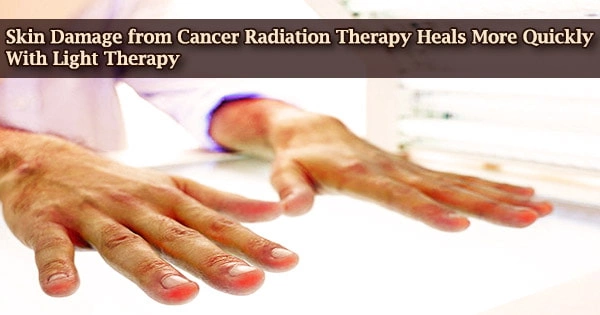According to a recent study done by the University of Buffalo, light therapy can speed up the repair of skin damage caused by radiation therapy by up to 50%.
Photobiomodulation, a type of low-dose light therapy, was found to lessen the severity of skin damage caused by radionecrosis (the breakdown of human tissue caused by radiation therapy), reduce inflammation, enhance blood flow, and speed wound healing by up to 19 days.
The findings, which were published in Photonics on December 28, 2021, follow previous publications on the efficacy of light therapy in boosting burn wound healing and alleviating discomfort from oral mucositis induced by radiation and chemotherapy.
Rodrigo Mosca, Ph.D., from the Nuclear and Energy Research Institute (IPEN) and the Federal University of Rio de Janeiro, both in Brazil, led the study. Carlos Zeituni, Ph.D., is a senior author and professor at IPEN and the Federal University of Rio de Janeiro.
“To our knowledge, this is the first report on the successful use of photobiomodulation therapy for brachytherapy,” said senior author Praveen Arany, DDS, Ph.D., assistant professor of oral biology in the UB School of Dental Medicine.
“The results from this study support the progression to controlled human clinical studies to utilize this innovative therapy in managing the side effects from radiation cancer treatments.”
To our knowledge, this is the first report on the successful use of photobiomodulation therapy for brachytherapy . The results from this study support the progression to controlled human clinical studies to utilize this innovative therapy in managing the side effects from radiation cancer treatments.
Praveen Arany
Brachytherapy is a type of radiation therapy in which a radiation source is implanted within the cancer tissue, exposing healthy tissue to lesser amounts of radiation than teletherapy, which uses a beam of radiation to reach the tumor via the skin. Skin damage is still an undesirable side effect of brachytherapy, despite the fact that it has enhanced the precision and safety of cancer treatment.
Radionecrosis, like burn wounds, can produce inflammation and scarring, as well as obstruct blood flow. Routine wound care, pain medication, and, in certain circumstances, surgery are among the current treatments for radionecrosis.
Photobiomodulation promotes healing by activating TGF? beta 1, a protein that controls cell growth and division by stimulating various cells involved in healing, such as fibroblasts (the body’s main connective tissue cells that play an important role in tissue repair) and macrophages (immune cells that lower inflammation, clean cell debris and fight infection), according to previous research conducted by Arany’s lab.
The current study looked at the usefulness of near-infrared and red LED light in promoting the recovery of skin injury after radiation therapy in an animal model.
Wounds took an average of 61 days to heal without photobiomodulation. Healing took an average of 49 days with near-infrared light treatment. When using red light treatment, healing took the shortest time, on average 42 days.
“For over 40 years, photobiomodulation has been known to accelerate the healing of acute and chronic wounds, triggering cellular processes that control inflammation, pain signaling, and tissue regeneration and repair,” said Mosca.
According to Arany, research reveals that photobiomodulation’s effects do not extend to tumor cells, which is likely due to their disrupted metabolic and regulatory signals.





